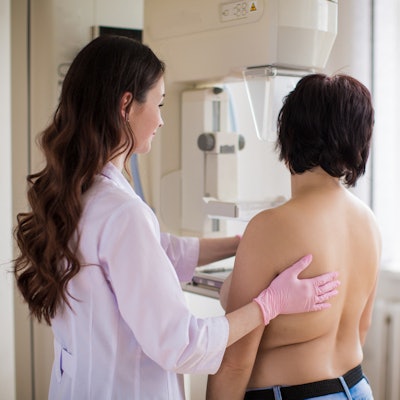
U.S. mammography screening rates have rebounded since plunging in the first few months of the COVID-19 pandemic, but there remains a large cumulative deficit due to missed appointments, according to a study published March 29 in the Journal of the National Cancer Institute.
The team of researchers led by Brian Sprague, PhD, of University of Vermont Larner College of Medicine found that in April 2020, screening rates fell to 1.1% of expected volume based on comparative historical data. By July 2020, that rate rebounded to 89.7%.
However, the group said a substantial cumulative deficit in mammography screening remains, due to missed exam appointments from March through May 2020. In an effort to reduce that deficit, screening rates will need to be above prepandemic levels.
Less information is available on diagnostic mammography, with two studies reporting that volume was reduced by as much as 80% during the early stage of the pandemic, according to the authors
The research team also identified screening disparities by race, with the rebound in mammography volume being lower among Hispanic and Asian women. While monthly screening volume for Black and white women reached 96.7% and 92.9% of the July 2019 prepandemic volume, respectively, the volume for Hispanic women reached just 72.7% and 51.3% for Asian women.
The study was conducted by investigators from the Breast Cancer Surveillance Coalition, a federally funded national network of breast imaging registries. Research is ongoing to understand the impact of reduced mammography utilization during the pandemic on breast cancer detection and outcomes.




















